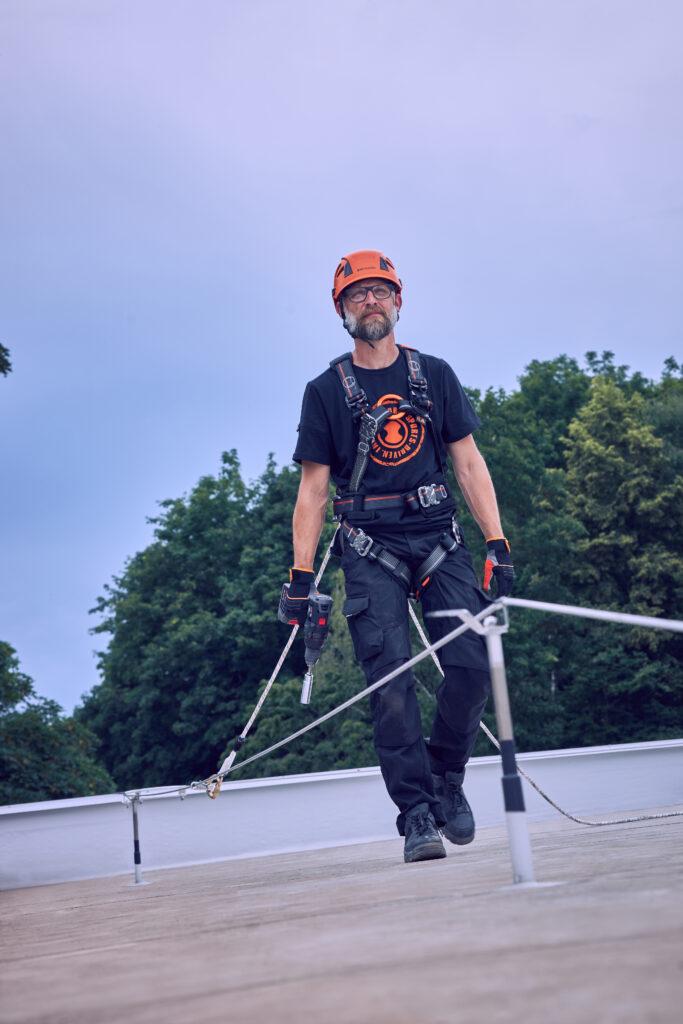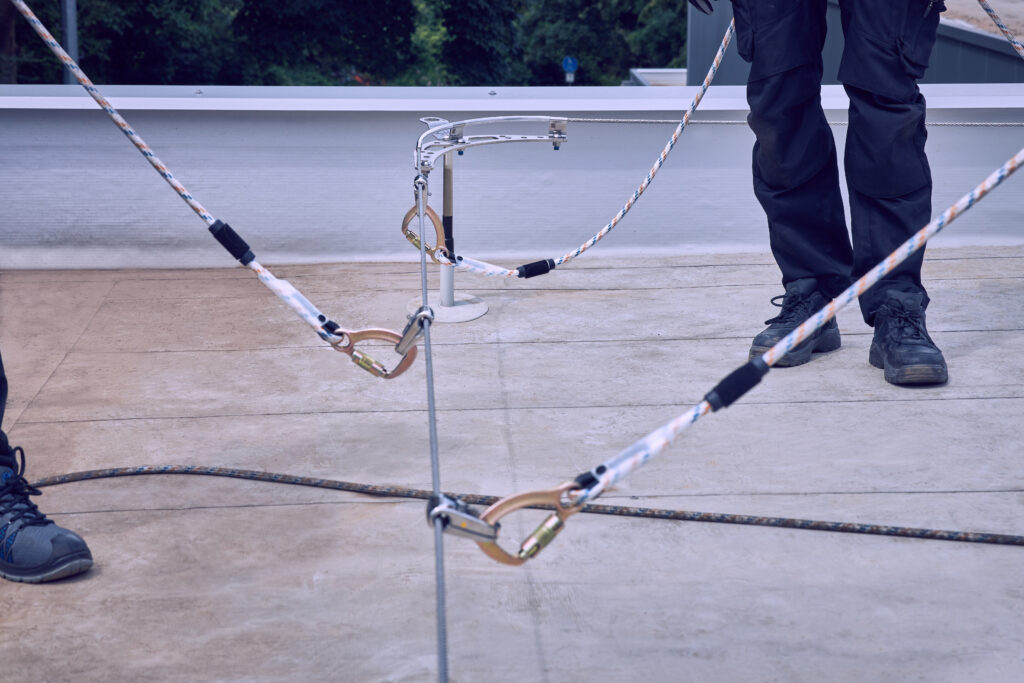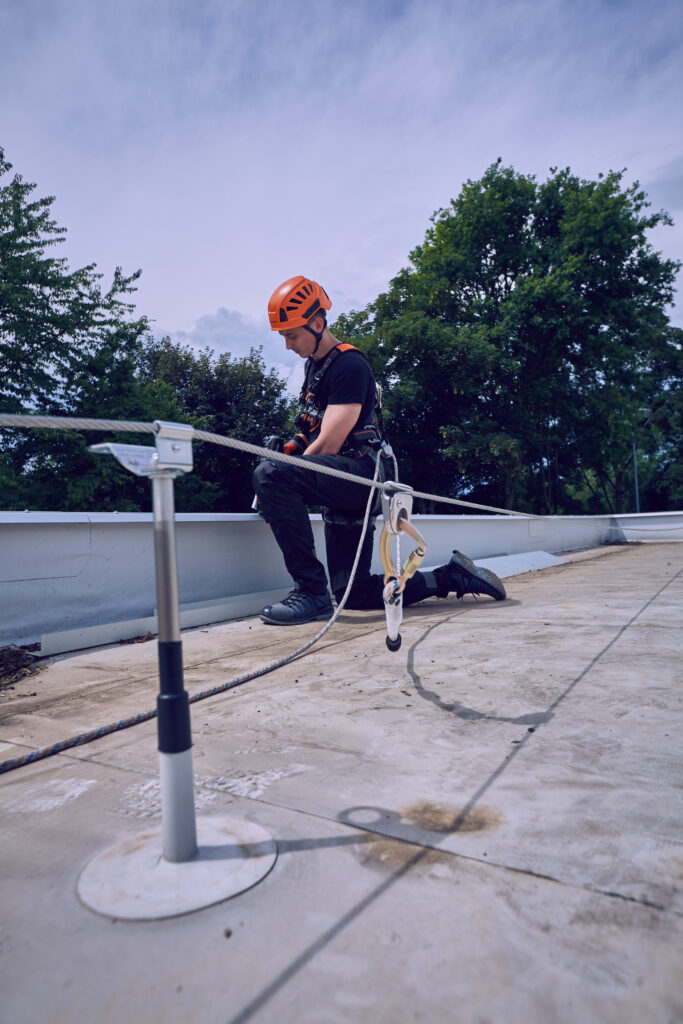With the "Skyline 2.0", SKYLOTEC has further developed its proven stainless steel rope system for permanent fall protection. The drive-over system can be installed on existing structures or on new buildings with little effort and thereby individually adapted to the respective conditions on site. Installers, maintenance workers or roofers can attach themselves to a smooth-running glider to move along the rope system without restriction and secured throughout. Certified lanyards with carabiners are also suitable; this increases flexibility when carrying out work.

When working on flat roofs, maintaining wastewater treatment plants or servicing production facilities, employees often use permanently installed fall protection systems to prevent a dangerous fall into the depths. Such systems can be installed horizontally on the floor, ceiling or wall. Rope safety systems, such as those offered by SKYLOTEC in its product range, have proven their worth. The globally active brand for fall protection systems has now further developed its proven rope system with the "Skyline 2.0". The system is based on a stainless steel rope guide. Workers can anchor themselves anywhere with a smooth-running glider. With the "Skyline Run", users can run over the intermediate supports and thus move around unrestricted at any time. They are thus secured at all times without having to constantly unhook and re-hook between anchor points. In addition, the carabiner of a certified lanyard can be used instead of a slider. This is an advantage over previously available solutions because flexibility is increased once again and a glider does not have to be carried permanently for use.
Individually adaptable with minimal material input

The "Skyline 2.0" can be installed on steel, concrete or wood with little effort using standard tools and pre-assembled elements. When it comes to fall protection, it should be considered before a building is constructed. This is more efficient than having to retrofit a building at a later date. Even longer distances can be bridged with just a few brackets that have to be installed every 15 meters at the most. On the one hand, this protects the fabric of the building because only a few holes need to be drilled in the concrete. On the other hand, costs are saved due to the low time and material input. In addition, the stainless steel rope safety system can be adapted to almost any building structure. Because tensioned along fall edges, the system is easily guided around corners and edges with special curved elements. The rope pretension can be freely selected up to 130 kg, depending on requirements. This means that the rope can be optimally tensioned even in the case of multiple curves. An integrated fall indicator is triggered at a load of around 200 kg and reliably indicates whether a person has already fallen into the system and it may then no longer be used.

Can be mounted on almost any anchor point
Once installed, a maximum of three people can secure themselves to the "Skyline 2.0" at the same time. The system has a general building approval (abZ) from the German Institute for Building Technology, and it has also been tested in accordance with EN 795:2012 and CEN/TS 16415:2013. It can also be installed on any single anchor point. The prerequisite for this is that it has an abZ or an approval in accordance with the European Technical Assessment (ETA). If the rope belay system is used in combination with the "Secupin" from SKYLOTEC, the function as a single anchor point is also retained. This offers further additional capacities when using the system in everyday work. This is because the single anchor point can be used to briefly unhook from the rope belay system at the eyelet if necessary and to secure oneself to it - for example, if a colleague wants to pass the intermediate holder. In the "Skyline 2.0", SKYLOTEC has also further developed damping properties and force compensation. As a result, the force introduced into the substructure in the event of a fall is significantly lower, thus preventing any possible overstressing of the building structure.
